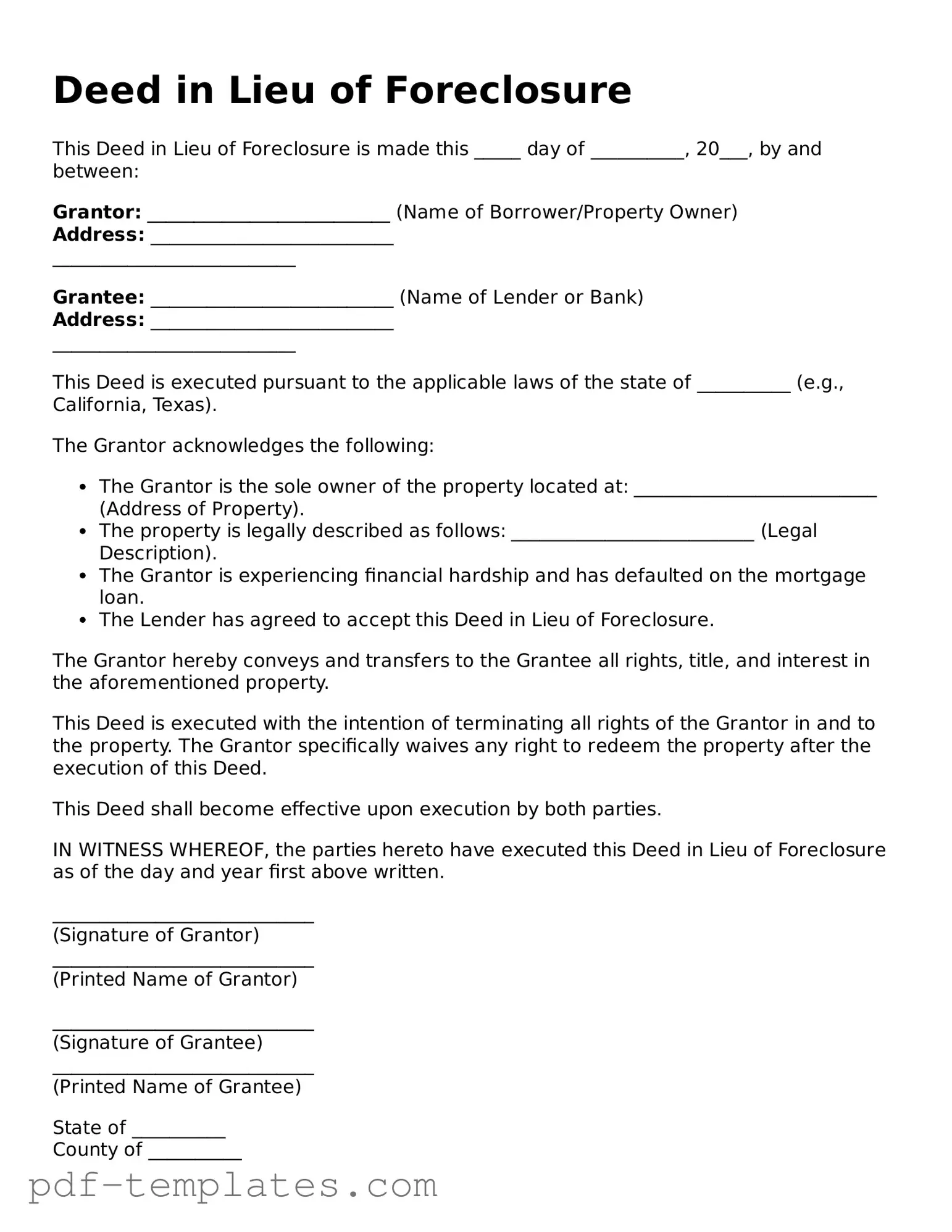A Short Sale Agreement is a document that allows a homeowner to sell their property for less than the amount owed on their mortgage. This process requires the lender's approval, similar to a Deed in Lieu of Foreclosure. Both options aim to avoid the lengthy and often costly foreclosure process. In a short sale, the homeowner actively sells the property, while in a deed in lieu, the homeowner voluntarily transfers ownership back to the lender without selling it on the market. Both can help mitigate financial loss for the lender and provide a way for the homeowner to move on from an unaffordable mortgage.
A Loan Modification Agreement is another document that shares similarities with a Deed in Lieu of Foreclosure. This agreement involves changing the terms of an existing mortgage to make payments more manageable for the borrower. Like the deed in lieu, a loan modification can prevent foreclosure by providing the homeowner with a more sustainable repayment plan. However, while the deed in lieu relinquishes ownership of the property, a loan modification allows the homeowner to retain their home while adjusting their financial obligations.
A Forebearance Agreement is a temporary solution that allows homeowners to pause or reduce their mortgage payments for a specified period. This agreement can help homeowners avoid foreclosure by providing immediate relief. Much like a Deed in Lieu of Foreclosure, it serves as a tool for struggling homeowners, but it does not involve transferring property ownership. Instead, it focuses on giving the homeowner time to recover financially while keeping their home during the forbearance period.
In addition to these options, understanding the importance of proper documentation in transactions involving trailers is crucial. For instance, a Trailer Bill of Sale form is vital for ensuring the clear transfer of ownership, and you can find a blank version of this essential document at https://documentonline.org/blank-trailer-bill-of-sale, which can help mitigate any potential misunderstandings during the sale process.
A Bankruptcy Filing can also be compared to a Deed in Lieu of Foreclosure. When a homeowner files for bankruptcy, they can seek to eliminate or reorganize their debts, including their mortgage. This legal process can halt foreclosure proceedings temporarily. While a deed in lieu directly transfers ownership to the lender, bankruptcy provides the homeowner with an opportunity to address their debts and potentially keep their home, depending on the type of bankruptcy filed.
A Quitclaim Deed is a document that allows a property owner to transfer their interest in a property to another party without any warranties or guarantees. This document can be similar to a Deed in Lieu of Foreclosure in that both involve transferring property ownership. However, a quitclaim deed is often used in personal situations, such as transferring property between family members, rather than as a means to avoid foreclosure. Both documents simplify the transfer process but serve different purposes in the context of property ownership.
Finally, a Release of Mortgage is a document that indicates a mortgage has been paid off and the lender relinquishes their claim to the property. This document is similar to a Deed in Lieu of Foreclosure in that it signifies the end of a financial obligation related to the property. However, while a release of mortgage occurs after the debt has been fully satisfied, a deed in lieu allows the homeowner to hand over the property to the lender when they are unable to meet their mortgage obligations, providing a way to resolve the situation without going through foreclosure.
